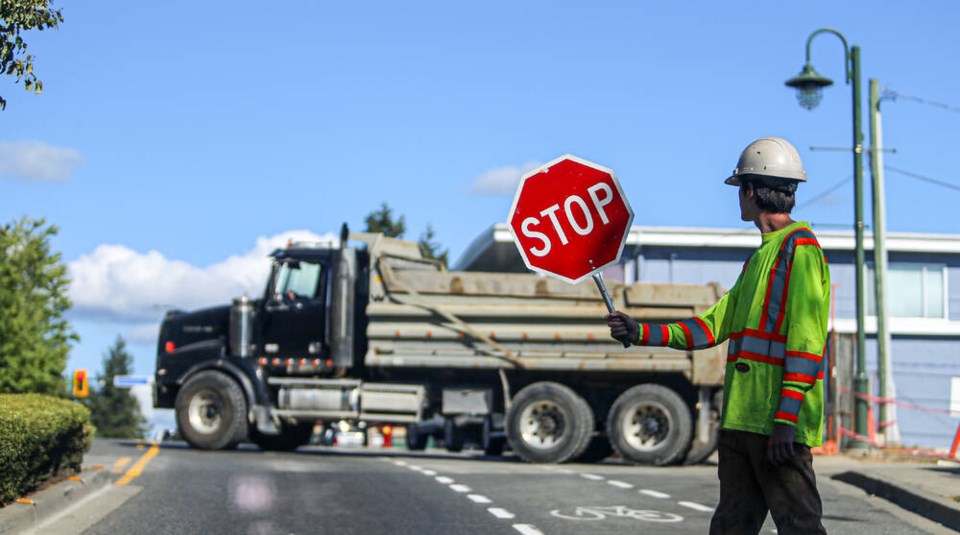A commentary by the program director for Road Safety at Work, a WorkSafeBC initiative managed by the Justice Institute of B.C.
Every day, tens of thousands of roadside workers across British Columbia face significant danger just doing their jobs. Their workplace is mere metres from passing traffic. In some cases, orange cones are the only things between them and vehicles weighing tonnes.
These people depend on our driving decisions for their safety. Like all of us, they deserve to return home safe at the end of each day.
Sadly, too many of them still get struck by vehicles while in their work zone. WorkSafeBC statistics from 2014 through 2023 show that nine workers were killed and another 251 injured seriously enough to miss work.
This is unacceptable. It’s also preventable. Too many people are hurt because drivers speed or don’t pay attention or impatiently ignore safety instructions.
Let’s remember that these are not just statistics. We are talking about someone’s family members: fathers, mothers, sons, and daughters.
Road Safety at Work’s Cone Zone safety awareness campaign aims to eliminate crashes, injuries, and deaths in roadside work zones.
It’s an especially timely message as we see increased traffic in summer, increasing the risk for workers, drivers, and their passengers. To achieve the goal, drivers need to help create a culture of safety and respect in every work zone at or along the road.
After all, the people who work there are doing things that help keep us all safe and our lives functioning smoothly.
Flag persons guide traffic efficiently. Road and utility crews build and maintain our infrastructure. Paramedics, firefighters, and police officers provide emergency services.
Tow operators clear hazards that snarl traffic flow. Landscapers improve visibility for drivers. The list of activities, and the benefits they provide, goes on and on.
We can show appreciation and respect for all of these people — they could be family, friends, neighbours, or members of our communities — by committing to making the roads safer for everyone.
Let’s adopt a simple mindset when approaching anyone working on or along the road: Drive as though that person is a loved one.
Consider the impact of your driving habits on their safety. Ask yourself: How would I want drivers to act if my family member or friend was working there?
Then reduce your speed, leave your phone alone and focus on driving, and obey directions from signs and flag persons. That’s the law, by the way, as well as the right thing to do.
And when approaching a vehicle that has flashing amber, red, or blue lights, be sure to follow the Slow Down Move Over law. It requires you to slow down and create as much space as possible between your vehicle and the work zone by moving into the left lane where safe to do so.
Most of us know these rules when it comes to emergency vehicles. But a recent Road Safety at Work survey found that almost one-third of work drivers didn’t know that the rules also apply to tow trucks and other vehicles with flashing amber lights.
You also need to know what to do when you see automated flagger assistance devices (AFADs). These distinctive devices use a traffic light, an automated gate arm, and a flag.
When the arm is down, stop at least one car length from an AFAD. Proceed only when the light flashes yellow and the gate arm is fully raised.
Changing our mindset and driving behaviour doesn’t take any special effort or any additional time. And in return, we can help save lives whenever we drive near anyone who works at or on the roadside, for any reason.
We can ensure that the Cone Zone is synonymous not with danger, but with a community committed to safety and respect.
>>> To comment on this article, write a letter to the editor: [email protected]



